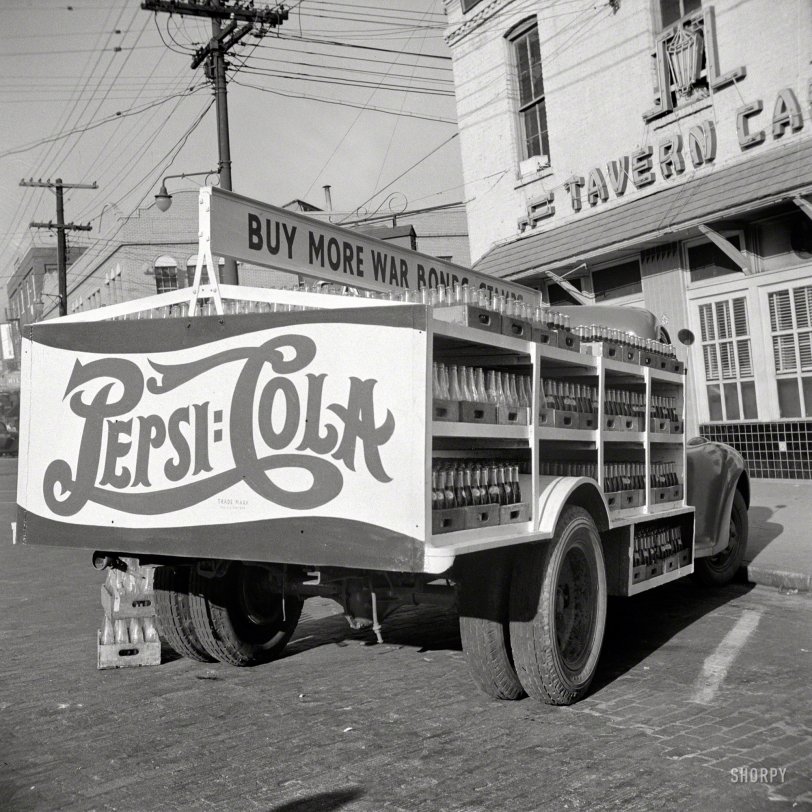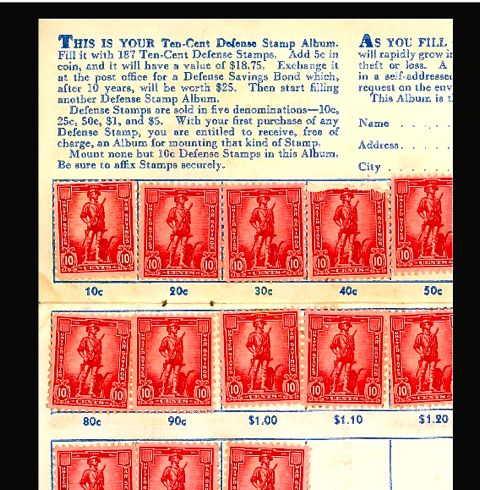


Framed or unframed, desk size to sofa size, printed by us in Arizona and Alabama since 2007. Explore now.
Shorpy is funded by you. Patreon contributors get an ad-free experience.
Learn more.

- Roll your own
- Rugged and real!
- A Charles Purcell - Mama Cass Connection
- Uncle SAAM
- Obfuscation
- One Chocolate Soldier rode away
- Victor Marquis de la Roche
- The Little House Across Way ...
- Vanderbilt Gates
- Vanderbilt Mansion
- You can still see that gate
- Withering heights for me
- So Jim,
- Top Heavy
- Re: Can't Place It.
- Bus ID
- Since you mention it
- The White Pages ?
- Moonlight Tower
- 1907?
- Fire(men) and Water
- Can't Place It
- Can anyone
- Wings
- Where's Claudette and Clark?
- Overbuilt Rolodex
- One song
- Give Me Wings Please!
- PRR
- Pinball Wizards
Printporium
Buy More War Bonds: 1943

March 1943. "Montgomery, Alabama. Soft drink truck." Pepsi goes to war. Photo by John Vachon for the Office of War Information. View full size.
Uncashed War Bonds
Just a quick search yielded a number of articles about uncashed bonds, here is one.
Cashing In
I was good Marine during Vietnam but more importantly I still possess a Liberty Bond from Granma out of WWI, some War Stamps and ration tickets from Mom out of WWII and some two-cent Pepsi empties out of the 1950s.
I may soon desert my wife of forty years, cash in and go nuts on a bender.
Any Bonds Today
I remember purchasing war savings stamps in school. They cost a dime or a quarter and they gave us a book to put them into. $18.75 was needed to purchase a bond that would eventually be worth $25. There probably still are millions of dollars worth of War Savings Bonds & Stamps in attics, safe deposit boxes, mattresses and file cabinets all over the country. Bugs Bunny used to sing "Any Bonds Today."

Magic of Compound Interest
I cashed out a $25 1941 war bond in 1981. 40 years!
It was worth $75, dashing my hopes of riches.
Its purchase price was probably around $17.50.
Heavy Stuff!
In 1965, I graduated High School, and with nothing to do for the summer before entering college, my Uncle John, who worked for Coca Cola, got me a summer job working at their Long Island City, NY bottling plant.
At first, I was put to work stacking full cases of Coke (6 across, 6 high) onto a wooden pallet that was loaded by fork lift onto a truck. Eight hours of that was grueling.
If you showed yourself to be a good worker, you were moved to unloading the empty bottles into the bottle washer.
If you were a really hard worker, you were moved onto the bottling line, looking for bottles that were broken or that did not fill completely.
Those full cases get REALLY HEAVY by the end of the day....
Two cents a bottle
When I was a kid (late 60s/early 70s), the deposit on these bottles was 2 cents. We could usually find enough discarded ones along the road and in parks to turn in at the grocery store and be able to buy candy and/or a balsa wood glider or two.
I wonder
what the loss rate by thirsy urchins was?
A sound I miss.
Seeing this photo reminds me how much I miss the sound of glass bottles tinkling in their wooden cases when moved.
























On Shorpy:
Today’s Top 5